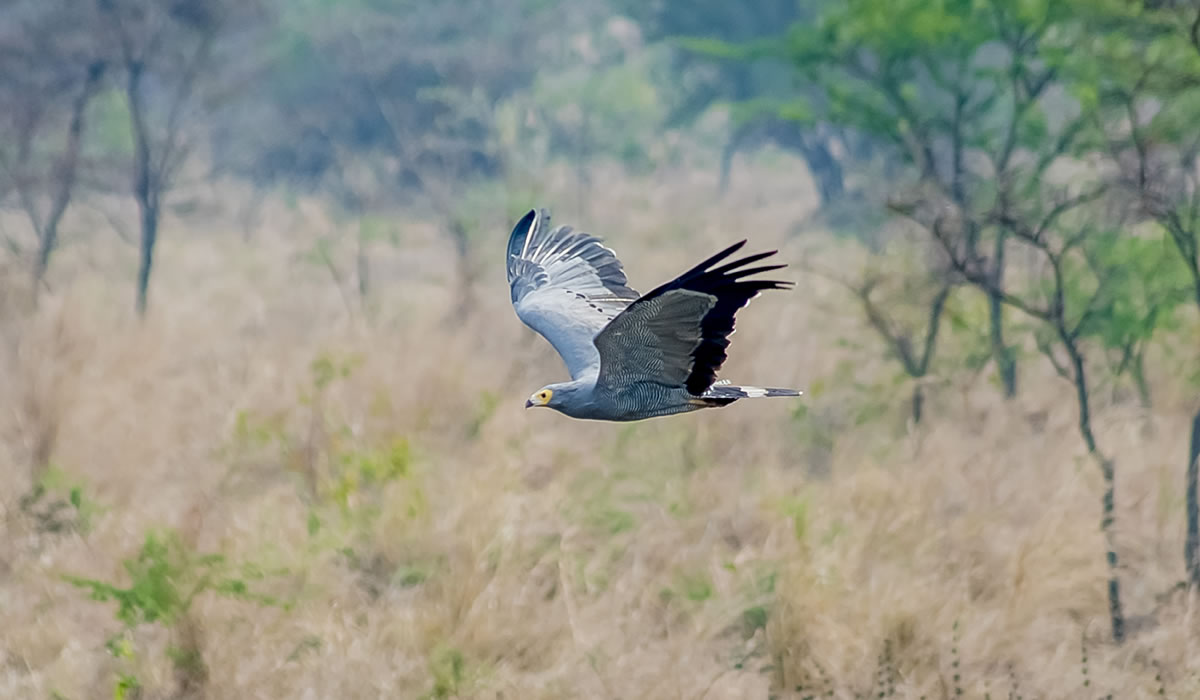Gishwati-Mukura National Park is one of Rwanda’s youngest national parks, yet it has quickly become an important destination for eco-tourism, primate tracking, and conservation-focused travel. Officially established in 2015, the park combines two separate forest reserves, Gishwati and Mukura, into one continuous protected area. Although smaller than other Rwandan parks like Nyungwe or Akagera, Gishwati-Mukura is unique for its pristine montane rainforest, rare primates, and its powerful story of ecological restoration. For travelers seeking off-the-beaten-path adventures in Rwanda, a visit to Gishwati-Mukura National Park offers intimate encounters with nature and a deeper understanding of conservation in action.

Located in the northwest of Rwanda, near Lake Kivu, Gishwati-Mukura National Park stretches across the districts of Ngororero, Rutsiro, Nyabihu, and Ngororero. The park sits on the Congo-Nile Divide, a scenic ridge that separates the Nile and Congo River basins. Its location is strategic, forming part of the Albertine Rift, one of the most biologically diverse regions on earth. Despite its relatively small size, about 34 square kilometers for Gishwati and 20 square kilometers for Mukura, the park shelters a wealth of biodiversity, including endangered species that are found nowhere else in the world.
The history of Gishwati-Mukura is as compelling as its wildlife. For decades, deforestation and human settlement severely reduced the size of these forests. By the early 2000s, Gishwati had been reduced to a fraction of its original cover, and wildlife populations were dwindling. Recognizing the ecological importance of the area, Rwanda embarked on an ambitious reforestation and conservation project. Through tree planting, community involvement, and strict protection, the forest began to recover, and populations of primates, birds, and other species started to return. The creation of the national park in 2015 was a landmark moment, securing the future of these forests and ensuring that conservation and community development go hand in hand.
One of the biggest attractions of Gishwati-Mukura National Park is its primate population. The park is home to chimpanzees, golden monkeys, L’Hoest’s monkeys, and blue monkeys. The chimpanzee population is small but thriving, and tracking these great apes is one of the most rewarding activities for visitors. Unlike the heavily visited Volcanoes National Park, where gorilla trekking draws large numbers of tourists, Gishwati offers a quieter and more intimate primate experience. Golden monkeys are another highlight, known for their playful behavior and vibrant colors, while L’Hoest’s monkeys, an Albertine Rift endemic, are rarely seen in many other parks, making Gishwati an important sanctuary for them.
Birdwatching is another major reason travelers come to Gishwati-Mukura. With over 230 bird species recorded, including 20 Albertine Rift endemics, the park is a paradise for ornithologists. Some of the notable birds include the Ruwenzori turaco, Regal sunbird, Grauer’s swamp warbler, and the strange weaver. Birding tours in Gishwati often combine forest walks with opportunities to spot both rare and common species. The park’s diversity of habitats, ranging from montane forest to swamps and grasslands, supports a wide range of birdlife that can be enjoyed year-round.
The park is also rich in plant diversity. Over 60 species of trees and shrubs have been identified, including native hardwoods and bamboo. These forests play a crucial role in water catchment, soil conservation, and climate regulation. They are also a source of traditional medicine for local communities who have lived around the forest for generations. Walking through the forest, visitors can learn about the ecological importance of these plants and how they sustain both wildlife and people.
Nature walks are among the most popular activities in Gishwati-Mukura National Park. Guided hikes take visitors through scenic trails, offering opportunities to see primates, birds, butterflies, and plants. The trails vary in length and difficulty, allowing for both short walks and longer treks that immerse visitors in the forest’s tranquility. Along the way, experienced guides share knowledge about the park’s history, its conservation challenges, and its ongoing restoration efforts. The quiet atmosphere and smaller number of visitors compared to other parks make these walks particularly peaceful and personal.
Cultural experiences complement the natural attractions of Gishwati-Mukura. The park works closely with surrounding communities to promote eco-tourism and ensure that locals benefit from conservation. Visitors can engage in cultural encounters such as learning traditional dances, joining local farmers in activities like beekeeping, or visiting cooperatives that produce handicrafts and herbal medicines. These experiences provide a deeper understanding of the human side of conservation and allow travelers to see how local livelihoods are intertwined with the health of the forest.
One of the park’s long-term goals is to connect Gishwati and Mukura forests into a continuous ecosystem corridor. This would not only improve habitat for wildlife but also increase tourism opportunities by creating larger areas for trekking and wildlife viewing. Already, efforts are underway to plant indigenous trees and restore degraded land between the two forests. This vision reflects Rwanda’s broader commitment to conservation and environmental sustainability.
Accommodation options around Gishwati-Mukura National Park are still developing but offer a range of choices. Gishwati Lodge, located near the forest, is the most luxurious option, providing high-end cottages with spectacular views, fine dining, and exclusive guided activities. For mid-range and budget travelers, there are guesthouses and community-run lodges in nearby towns like Rubavu and Nyabihu, which also provide convenient access to Lake Kivu and Volcanoes National Park. Many visitors choose to combine a trip to Gishwati-Mukura with other destinations in Rwanda, creating a diverse itinerary that includes gorilla trekking, lake excursions, and cultural tours.
Getting to Gishwati-Mukura is relatively easy from Kigali, the capital of Rwanda. The drive takes about two to three hours, passing through rolling hills, tea plantations, and picturesque rural landscapes. This accessibility makes it possible to visit the park as a day trip, though staying overnight is recommended to fully experience its natural and cultural attractions. Many tour operators include Gishwati in tailor-made itineraries, highlighting it as a hidden gem for eco-conscious travellers.
When planning a visit, it is useful to know that Gishwati-Mukura can be enjoyed throughout the year. The dry seasons, from June to September and December to February, are the best times for trekking, as trails are less muddy and wildlife is easier to spot. The wet seasons, from March to May and October to November, bring lush greenery and increased bird activity, although trekking can be more challenging. Regardless of the season, the park offers rewarding experiences for those seeking authenticity and tranquility.
Gishwati-Mukura is more than just a tourist destination, it is a symbol of Rwanda’s commitment to conservation and sustainable tourism. The park demonstrates how degraded landscapes can be restored when local communities, government, and conservation organizations work together. It also shows how tourism can play a role in protecting biodiversity while creating economic opportunities. By visiting the park, travelers contribute directly to these efforts, supporting both the environment and the people who depend on it.
Gishwati-Mukura National Park is a remarkable destination that combines biodiversity, cultural richness, and conservation success. With its primates, rare birds, scenic forests, and strong community involvement, it offers a unique alternative to Rwanda’s more famous parks. While it may be less known than Volcanoes or Nyungwe, its quiet beauty and intimate experiences make it a hidden treasure worth exploring. Whether tracking chimpanzees, birdwatching in the canopy, hiking along forest trails, or engaging with local communities, visitors will find that Gishwati-Mukura offers something truly special. For eco-tourists and nature lovers, it is not just a place to visit but a place to connect with Rwanda’s ongoing story of renewal and resilience.
For anyone planning a Rwanda safari, adding Gishwati-Mukura National Park to the itinerary provides depth, diversity, and authenticity. It is a destination where conservation and tourism walk hand in hand, ensuring that future generations can continue to enjoy its wonders. As one of Rwanda’s youngest but most inspiring national parks, Gishwati-Mukura stands as a beacon of hope for forests, wildlife, and communities alike.

